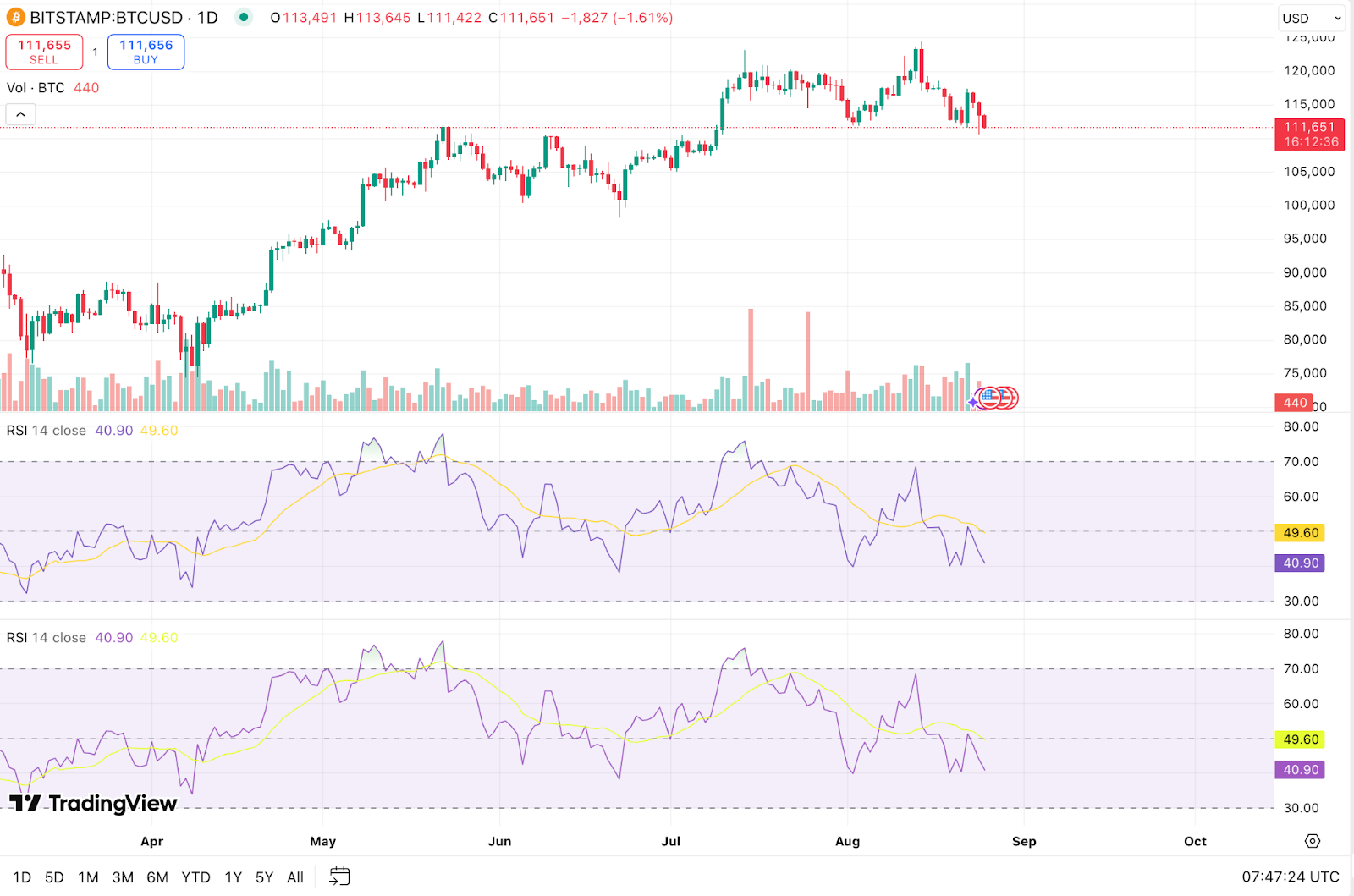Bitcoin Whale Dumps 24,000 BTC, Sending Prices Plunging
Please note that we are not authorised to provide any investment advice. The content on this page is for information purposes only.
On August 24, a Bitcoin Whale completed the sale of 24,000 BTC ($2.7 billion). This was followed by a wave of liquidations. The price of Bitcoin fell about 2.2% within nine minutes to around $114,666 and subsequently dropped below the $112,000 support zone.
Following this transaction, the Bitcoin Whale still holds 152,874 BTC (valued at over $17 billion).
Analysts Blame Bitcoin Whales for Slow Growth Cycle
According to details publicly discussed on X, the entity began transferring the Bitcoin to the decentralized perpetuals platform Hyperliquid on August 16. The process involved moving the 24,000 BTC in six tranches over the following nine days.
JUST IN: A Bitcoin whale sold 24,000 BTC worth over $2.7 billion, causing today’s -$4,000 crash in minutes.
They still hold 152,874 BTC worth more than $17 BILLION. 😳
h/t @SaniExp pic.twitter.com/m4aM9JwlAO
— Bitcoin Archive (@BTC_Archive) August 24, 2025
Of that total transferred, 18,142 BTC, valued at roughly $2 billion, has been sold. Most of the proceeds were used to acquire 416,598 ETH, suggesting a clear pivot from Bitcoin to Ethereum.
Crypto analyst MLM noted that the whale is also using additional wallet addresses to move more Bitcoin into Hyperliquid for further ETH purchases. Around 275,500 ETH, worth $1.3 billion, has already been staked, indicating a long-term strategy rather than a short-term trade.
According to Bitcoin veteran Willy Woo, the slow pace of Bitcoin’s growth in this cycle is tied to the concentration of supply among large whales who accumulated their BTC years ago, some as early as 2011.
Woo explains that these whales purchased Bitcoin for less than $10 per coin. As a result, it now takes over $110,000 in new capital to absorb each coin they sell.
Why is BTC moving up so slowly this cycle?
BTC supply is concentrated around OG whales who peaked their holdings in 2011 (orange and dark orange).
They bought their BTC at $10 or lower. It takes $110k+ of new capital to absorb each BTC they sell. pic.twitter.com/7CbWXsvX2l
— Willy Woo (@woonomic) August 24, 2025
In other words, because the whales hold massive amounts and only sell in measured increments, substantial new purchase is required to push the BTC price higher. This imbalance between supply and demand slows the market’s upward momentum.
Further pressure comes from whales swapping Bitcoin for Ethereum.
On August 21, another Bitcoin whale sold 670 BTC, valued at $76 million, to open a long position in Ethereum.
Jacob King, CEO of WhaleWire, provided clarity. He explained that once these whales began selling, panic cascades occurred. Other traders sold in response, amplifying the market drop.
Is There a Chance for BTC Price to Revive?
At press time, Bitcoin is exchanging hands at $111,900, and technical indicators offer some insight. Its Relative Strength Index (RSI) sits at 40.90, indicating that BTC is moving towards oversold region and buyers may step in to create a potential rebound.

Despite the short-term slowdown, bullish perspectives persist. Coinbase CEO Brian Armstrong recently projected Bitcoin could reach $1 million by 2030.
https://twitter.com/brian_armstrong/status/1958259831577731159
He is joined by other investors and industry leaders who believe Bitcoin will see explosive growth before the decade ends.
For them, three factors support this outlook: Bitcoin’s limited supply, accelerating institutional adoption, and global economic uncertainty. They argue Bitcoin could serve as a digital reserve asset, akin to gold, offering security against inflation and currency devaluation.




